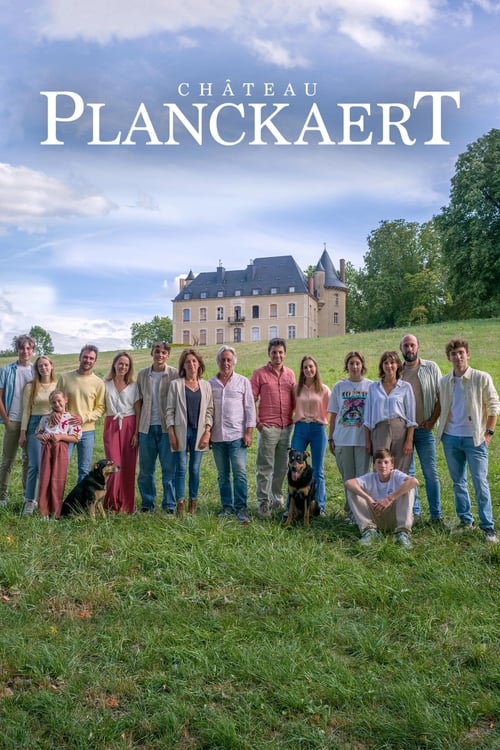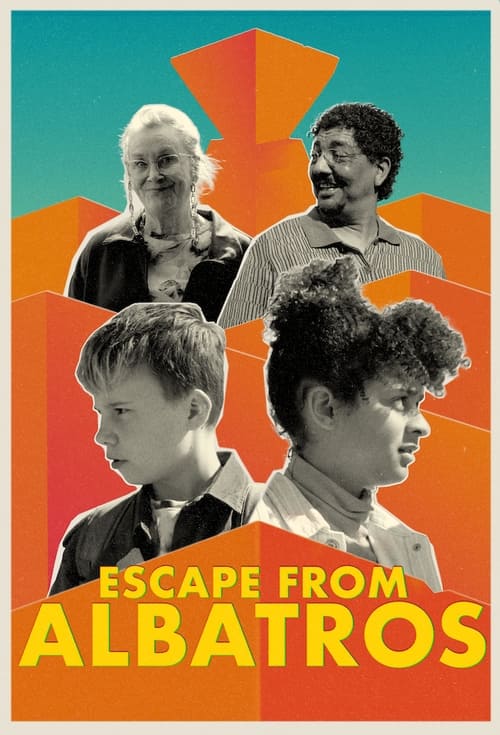
Ask Your Own Question
What is the plot?
In the first episode of "Lisa," we are introduced to Lisa, a young woman in her late twenties, who is struggling to find her place in the world. The episode opens with her waking up in her small, cluttered apartment, surrounded by art supplies and unfinished projects. She feels a sense of frustration and stagnation as she prepares for another day at her uninspiring job at a local coffee shop. The camera captures her tired eyes and the way she absentmindedly brushes her hair back, revealing her inner turmoil.
As Lisa serves customers at the coffee shop, we see her interactions with her co-workers, particularly her best friend, Mia, who is more outgoing and adventurous. Mia encourages Lisa to pursue her passion for art, but Lisa feels weighed down by self-doubt. A pivotal moment occurs when a regular customer, an art gallery owner named David, compliments her sketches that she leaves on the counter. This brief interaction ignites a flicker of hope in Lisa, prompting her to consider showcasing her work.
Later that evening, Lisa attends a local art show with Mia. The atmosphere is vibrant, filled with colorful artwork and lively conversations. Lisa feels out of place but is inspired by the talent around her. She watches as artists confidently present their work, and a sense of longing washes over her. Mia pushes her to network, but Lisa hesitates, feeling inadequate. The night takes a turn when she accidentally bumps into David again, who encourages her to submit her art for an upcoming exhibition. This moment becomes a turning point for Lisa, as she decides to take a leap of faith.
In the following scenes, Lisa begins to work on her submission for the exhibition. The process is fraught with self-doubt and frustration. We see her struggle to find her artistic voice, often tearing up her sketches and starting over. The emotional weight of her insecurities is palpable, and the audience witnesses her internal battle through close-up shots of her furrowed brow and clenched fists. Mia continues to support her, reminding her of her talent and potential.
As the deadline for the exhibition approaches, Lisa experiences a creative breakthrough. One night, she stays up late, fueled by a mix of anxiety and inspiration, and produces a series of pieces that reflect her personal struggles and triumphs. The artwork is raw and emotional, showcasing her journey of self-discovery. This sequence is visually striking, with the camera capturing the intensity of her focus and the chaotic beauty of her workspace.
The day of the exhibition arrives, and Lisa is filled with a mix of excitement and dread. She arrives at the gallery, where her pieces are displayed alongside other artists. The atmosphere is electric, and Lisa feels a rush of adrenaline as she sees people engaging with her work. However, her anxiety resurfaces when she overhears critical comments about her art. This moment of vulnerability is depicted through her tense body language and the way she clutches her sketchbook tightly.
During the exhibition, David approaches Lisa and expresses his admiration for her work. He offers her constructive feedback, which she initially takes to heart but later questions. This interaction serves as a catalyst for Lisa to confront her fears and insecurities. She realizes that she must embrace her unique perspective rather than conform to others' expectations. The emotional climax of the episode occurs when Lisa decides to speak to the crowd about her art, sharing her personal story and the meaning behind her pieces. The audience responds positively, and Lisa feels a sense of validation and empowerment.
As the episode concludes, Lisa leaves the gallery with a newfound sense of purpose. The camera follows her as she walks through the city, her posture more confident and her expression brighter. She reflects on her journey and the importance of believing in herself. The final shot captures her looking up at the night sky, symbolizing hope and the endless possibilities that lie ahead.
What is the ending?
In the ending of "Lisa," season 1, Lisa confronts her past and the choices she has made. The season culminates in a dramatic showdown where she must decide between her old life and the new path she has forged. Ultimately, she chooses to embrace her future, leaving behind the toxic relationships that have held her back. The season concludes with a sense of hope as Lisa steps into a new chapter of her life, surrounded by supportive friends.
As the final episode unfolds, the scene opens in Lisa's apartment, where she sits on the edge of her bed, staring at a photo of her younger self. The room is dimly lit, casting shadows that reflect her internal struggle. She feels the weight of her past decisions pressing down on her, and the emotional turmoil is palpable. The camera zooms in on her face, capturing the conflict in her eyes--fear of the unknown versus the desire for change.
Cut to a flashback sequence, where Lisa recalls moments of betrayal and disappointment from her past relationships. Each memory is vivid, filled with the laughter and pain that shaped her. The scenes are interspersed with her current reality, highlighting the stark contrast between who she was and who she wants to become. The emotional resonance of these memories fuels her determination to break free.
The narrative shifts back to the present as Lisa receives a phone call from her estranged friend, Sarah. The tension is thick as Lisa hesitates to answer, knowing that Sarah represents a part of her life she is trying to leave behind. After a moment of contemplation, she answers the call, and their conversation quickly escalates into a confrontation. Sarah's voice is filled with anger and resentment, accusing Lisa of abandoning her. Lisa, however, stands her ground, expressing her need to prioritize her own well-being. The scene is charged with emotion, showcasing Lisa's growth and newfound strength.
As the confrontation ends, Lisa hangs up the phone, tears streaming down her face. She feels a mix of sadness and relief, realizing that letting go of toxic relationships is a necessary step toward her healing. The camera captures her vulnerability, but also the flicker of hope in her eyes as she wipes away her tears.
The final scenes take place at a gathering with her new friends, who have supported her throughout her journey. The atmosphere is warm and inviting, filled with laughter and camaraderie. Lisa stands in the center, surrounded by people who genuinely care for her. The camera pans around the room, capturing the joy and acceptance that fills the space. Lisa's smile is radiant, a stark contrast to the uncertainty she felt earlier.
In the closing moments, Lisa steps outside into the night, the city lights twinkling around her. She takes a deep breath, feeling the cool air fill her lungs. The weight of her past begins to lift as she walks forward, embracing the possibilities that lie ahead. The season ends on a hopeful note, with Lisa looking up at the stars, symbolizing her newfound freedom and the bright future she is ready to embrace.
As for the fates of the main characters, Lisa emerges as a stronger individual, ready to face her future with confidence. Sarah, on the other hand, is left grappling with the consequences of her actions and the loss of their friendship. The season closes with a sense of resolution for Lisa, while leaving Sarah's journey open-ended, hinting at the complexities of relationships and personal growth.
Is there a post-credit scene?
In the show "Lisa," season 1, there is indeed a post-credit scene that adds an intriguing layer to the narrative.
As the credits roll, the screen fades to black before transitioning to a dimly lit room filled with various art supplies scattered across a large table. The camera slowly pans to reveal Lisa, the protagonist, sitting at the table, her brow furrowed in concentration. She is working on a large canvas, her brush strokes deliberate yet frantic, reflecting her inner turmoil and the weight of her recent experiences.
The scene captures the essence of her emotional state--torn between her aspirations and the challenges she faces. As she paints, flashes of memories from earlier episodes flicker in her mind, showcasing moments of joy, heartbreak, and self-discovery. The colors on her canvas shift from dark, muted tones to vibrant hues, symbolizing her journey toward finding her voice and reclaiming her identity.
Suddenly, she pauses, staring at the canvas with a mix of frustration and determination. In a moment of clarity, she picks up a bright red paint and splashes it across the canvas, a bold statement of defiance against the obstacles in her life. The camera zooms in on her face, revealing a spark of hope in her eyes, suggesting that she is ready to confront whatever comes next.
The scene ends with a close-up of the canvas, now a chaotic yet beautiful representation of her struggles and triumphs, leaving viewers with a sense of anticipation for what lies ahead in her journey. This post-credit moment encapsulates the themes of resilience and self-expression that are central to Lisa's character arc throughout the season.
What motivates Lisa to pursue her dreams despite the challenges she faces?
Lisa is driven by a deep-seated desire to prove herself and escape the confines of her small-town life. Her passion for art and the need for self-expression fuel her determination, even when faced with skepticism from her peers and family.
How does Lisa's relationship with her best friend evolve throughout the season?
Lisa's relationship with her best friend, Mia, is tested as they navigate their individual aspirations. Initially supportive, tensions arise when Mia feels overshadowed by Lisa's growing success, leading to moments of conflict and eventual reconciliation as they learn to balance their ambitions.
What role does Lisa's family play in her journey?
Lisa's family serves as both a source of support and conflict. Her parents have traditional expectations for her future, which clash with her artistic ambitions. This dynamic creates emotional turmoil for Lisa, as she grapples with the desire to honor her family's wishes while pursuing her own path.
What challenges does Lisa face in her artistic career, and how does she overcome them?
Throughout the season, Lisa encounters various obstacles, including self-doubt, financial struggles, and criticism from art critics. She overcomes these challenges by seeking mentorship, attending workshops, and ultimately finding her unique voice, which helps her gain confidence and recognition.
How does the setting influence Lisa's character development?
The small-town setting plays a crucial role in shaping Lisa's character. It represents both her limitations and her aspirations. The contrast between her mundane surroundings and her vibrant artistic dreams highlights her internal conflict and drives her to seek a life beyond the familiar, pushing her towards growth and self-discovery.
Is this family friendly?
The show "Lisa," season 1, produced in 2021, contains several elements that may not be considered family-friendly. Here are some potentially objectionable or upsetting aspects:
-
Mature Themes: The series explores complex emotional issues, including mental health struggles, which may be difficult for younger viewers to understand.
-
Conflict and Tension: There are scenes of interpersonal conflict that can be intense, showcasing arguments and emotional distress among characters.
-
Depictions of Loss: The show addresses themes of loss and grief, which may be upsetting for sensitive viewers, particularly children who may not have encountered such topics before.
-
Substance Use: There are references to substance use that may not be appropriate for younger audiences.
-
Emotional Vulnerability: Characters experience significant emotional turmoil, which could resonate deeply with sensitive viewers, potentially leading to discomfort.
-
Social Issues: The narrative touches on social issues that may be challenging for children to process, including bullying and isolation.
These elements suggest that while the show may have valuable themes, it may not be suitable for all children or sensitive individuals. Viewer discretion is advised.


































